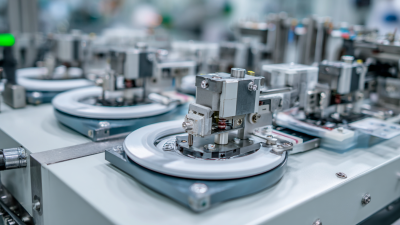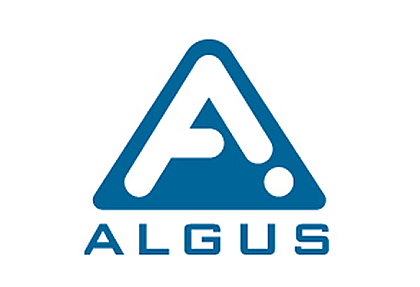Discover the Best Practices for Using a Blister Pack Heat Sealer in Your Packaging Process
In today's competitive packaging industry, selecting the right equipment is essential for ensuring product integrity and enhancing overall efficiency. One such crucial tool is the blister pack heat sealer, which provides an effective solution for sealing a variety of products into pre-formed blister packs. This "how to" guide aims to uncover the best practices for using a blister pack heat sealer, helping manufacturers optimize their packaging processes. By understanding the key features of heat sealers, from temperature settings to sealing times, and learning expert tips for operation and maintenance, businesses can significantly improve their productivity and minimize waste. Whether you are a seasoned professional or new to the packaging scene, mastering the use of a blister pack heat sealer will empower you to achieve top-quality results while ensuring that your products remain safe and secure.

Understanding the Fundamentals of Blister Pack Heat Sealers in Packaging
Blister pack heat sealers play a crucial role in the packaging industry, particularly in sectors such as pharmaceuticals and consumer goods. These devices utilize heat and pressure to create strong seals between plastic films and backing materials, ensuring optimal protection and product integrity. According to a report by MarketsandMarkets, the global blister packaging market is expected to reach USD 30.67 billion by 2026, growing at a CAGR of 6.5%. This growth is indicative of the increasing demand for efficient and reliable packaging solutions that heat sealers can offer.
Understanding the fundamentals of blister pack heat sealers is essential for manufacturers seeking to enhance their packaging processes. Key factors include temperature control, sealing time, and pressure application, which all influence the quality of the seal. A study published in the International Journal of Pharmaceutical Sciences and Research emphasizes that improper sealing can lead to product contamination and reduced shelf life. By adhering to best practices such as regular maintenance and calibration of equipment, companies can significantly improve their sealing accuracy and efficiency, which ultimately contributes to customer satisfaction and brand loyalty.
Heat Seal Efficiency in Different Industries
Key Factors to Consider When Selecting a Blister Pack Heat Sealer
When selecting a blister pack heat sealer, there are several key factors to consider to ensure optimal performance in your packaging process. First and foremost, assess the type of materials you will be sealing. Different sealers are designed for specific materials, such as PVC, PET, or thin films. Knowing the compatibility of your packaging material with the heat sealer is crucial to achieving a secure seal and maintaining product integrity.
Another important consideration is the sealing method. Some sealers utilize direct heat, while others may use impulse sealing techniques. Your choice will depend on the production speed required and the specific characteristics of the products being packaged. Additionally, consider the size and configuration of the blister packs. A versatile heat sealer that accommodates various product sizes can enhance efficiency and reduce downtime during changeovers. Lastly, evaluate the machine's ease of use and maintenance requirements, as these factors can have a significant impact on operational efficiency in the long run.
Discover the Best Practices for Using a Blister Pack Heat Sealer in Your Packaging Process
| Key Factor | Description | Considerations |
|---|---|---|
| Sealing Temperature | The optimal temperature for sealing different materials. | Ensure compatibility with the materials used in your packaging. |
| Seal Time | The duration required for the heat to bond the materials. | Adjust based on material thickness to avoid damage. |
| Pressure Settings | The amount of pressure applied during sealing. | Higher pressure may be needed for thicker materials. |
| Machine Type | Different types of blister pack heat sealers available. | Consider automation and production volume when choosing. |
| Safety Features | Built-in safety mechanisms to protect operators. | Look for emergency stop buttons and heat guards. |
| Maintenance Requirements | The upkeep needed to ensure optimal performance. | Choose a machine that is easy to clean and maintain. |
| Cost Efficiency | The overall cost of the equipment relative to its performance. | Evaluate cost against features and long-term savings. |
Step-by-Step Guide to Optimize the Blister Packaging Process
Optimizing the blister packaging process begins with understanding the components of a heat sealer and their roles. First, assess the materials used in both the blister and the film. Choosing compatible materials is crucial, as mismatched materials can lead to sealing failures and reduced product integrity. Next, calibrate the heat sealer to ensure the right temperature and pressure settings. This step is vital to achieving a strong seal while avoiding damage to the product or packaging.
Once the sealer is optimized, focus on the workflow. Streamlining the packaging line can significantly enhance efficiency. Implement a standardized operating procedure (SOP) for all employees involved in the packaging process, ensuring that everyone is trained on the best practices for operating the heat sealer and handling the blister packs. Regular maintenance of the machine also plays a critical role; schedule frequent checks to prevent downtime and maintain the quality of the seals. By following these steps, businesses can enhance their blister packaging efficiency, ensuring a reliable and durable product for consumers.
Common Mistakes to Avoid When Using a Blister Pack Heat Sealer
When utilizing a blister pack heat sealer, avoiding common pitfalls can significantly enhance the efficiency and quality of your packaging process. One prevalent mistake is inadequate material selection; using incompatible or low-quality blister materials can compromise seal integrity, leading to product spoilage or contamination. According to a report by Smithers Pira, improper sealing can result in as much as 20% of products being returned or rejected, emphasizing the importance of choosing materials specifically designed for blister packaging.

Another critical error involves the sealing process parameters, including temperature and pressure settings. Many operators fail to optimize these parameters, which can lead to weak seals or damage to the product. A study conducted by the Packaging Machinery Manufacturers Institute (PMMI) indicates that improper heat sealing can decrease production efficiency by up to 30%, resulting in significant cost implications. Regular training and adherence to manufacturer guidelines are essential to ensure that the sealing process is executed correctly, thereby preventing costly mistakes and ensuring that your products reach the market in pristine condition.
Maintenance Tips for Ensuring Longevity of Your Heat Sealer
Proper maintenance of a blister pack heat sealer is crucial for maximizing productivity and ensuring the quality of your packaging process. According to a study by the Packaging Machinery Manufacturers Institute, proper maintenance can reduce equipment downtime by as much as 30%. Regular checks and adjustments can significantly prolong the life of your sealer, saving businesses both time and money in the long run.

One essential tip is to clean the sealing surfaces regularly. Residue buildup can lead to ineffective seals, which compromise product integrity. It is recommended to use a soft cloth and appropriate cleaning agents to wipe the sealing area before and after each use. Additionally, inspect the heating elements for signs of wear or damage. Replacing worn components promptly can help maintain optimal sealing temperatures, which are vital for achieving consistent results.
Another important aspect of maintenance is monitoring the calibration of your heat sealer. Over time, seals may become inconsistent if the machine is not calibrated to the correct settings. Regularly verify that temperature and pressure settings align with manufacturers' specifications. Implementing a scheduled review process can help detect issues before they escalate, further enhancing your packaging efficiency and product safety.
Related Posts
-

Addressing Common Challenges in Blister Pack Packaging: Solutions for Effective Product Protection
-

How to Choose the Right Blister Machine for Your Packaging Needs
-

7 Best Practices for Optimizing Your Blister Sealing Machine Efficiency
-

The Ultimate Guide to Choosing Eco-Friendly Pet Blister Packaging for Your Business
-

Unlocking the Future of Packaging Automation with Digital Innovations
-

How to Optimize Blister Tray Packaging for Maximum Product Protection and Cost Efficiency
